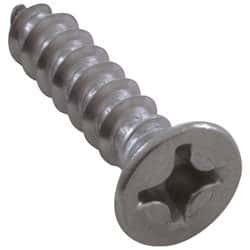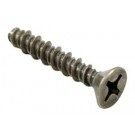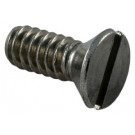Pool Pumps – Sucking In Air
The pump is sucking in air
The pump should normally run “air free”, that is without air running through the system. If you notice air bubbles coming out
of the pool returns, there may be a problem. (The only situation in which air bubbles are normal would be in a spa or in a pool where there is an ozonator.)
Air bubbles usually indicate that air is being introduced to the system at the pump or at some point upstream from the pump.
The problem may be at the pool skimmers:
Low Water Level
If the water level in the pool is too low, then air can get into the skimmer lines and will then be drawn in to the pump.
Skimmer Full of Leaves
If the skimmer is really full of leaves, then it will dam up the skimmer opening and allow air to be drawn in to the skimmer line.
 The problem may be at the intake plumbing on the pump. The problem may be at the intake plumbing on the pump.
Wherever you have pipe fittings and valves, the potential exists for air leaks. A simple test to check for leaks in this area is to simply turn the pump off and
look for small spurts of water anywhere in the valves or fittings. If a “spurt” occurs, then you have most likely found the source of the leak.
Gate Valves
Gate valves like this one often suck in air around the shaft of the valve. This is usually due to dried out packing. Sometimes
you can tighten down the packing nut to solve the problem, but the proper long term fix is to repack the valve or replace it entirely with a Jandy type valve.
 Jandy Valves Jandy Valves
On Jandy style valves, there is a cap o-ring and a shaft o-ring that can suck in air.
Use the simple test described earlier in this section to determine the source of the leak.
The jandy “space saver” valves are more likely to leak. They are a smaller valve than the one shown in this
illustration. They only have four cap screws instead of eight, and do not seal as tightly around the cap. Some pool plumbers install these because they are
easier to work with, but they are not doing any favors for the customer in the long run.
Pipe Fittings
Anywhere you have a pipe fitting, you have two or three possibilities for a leak. Improperly glued pipe can leak
immediately. Leaks can also develop in ten year old glue joints. Look for water leaking in the simple test described earlier.
The problem may be at the pump itself. As the diagram below illustrates, there are many places in the pump that can
leak air.
Intake Port
 One very common source of air is the threaded One very common source of air is the threaded
intake port on the pump. The thread sealant can dry out over time, or the intake fitting may loosen or become mis-shapen. This can be temporarily
repaired with putty or silicone, but such a repair is neither professional or permanent. The only repair is to remove the threaded fitting and replace it or recoat
the threads with sealant and screw it back into the pump.
If the threaded fitting on the intake port is not a Schedule 80 CPVC nipple, then it should be replaced at this time. Some
builders and repair companies will use regular male adapters or a grey nipple that looks like CPVC, but is actually a very cheap substitute that in the end only costs the
homeowner extra to repair.
Pump Lid O-Ring
The pump lid o-ring can get dried out, flattened or cracked over time. In this event it should be replaced. These
o-rings should be lubricated with a thin coat of silicone lube. We prefer to use Rainbow Silicone lube because it is a medium bodied lubricant that does not get
sticky over time.
Sometimes a pump lid o-ring will accidentally fall on the ground while the operator is emptying the trap basket. This will
create immediate priming problems.
Sometimes a pump lid o-ring will get a little piece of a leaf stuck in it, and this can cause a lot of air to be sucked into the
pump.
On bronze pumps, the o-rings will get hard and flat on one side and eventually refuse to provide a good seal.
Drain Plugs
There are drain plugs located on the pump pot and the main body of the pump. If these are loose or not sealed well, they
can leak. On newer pumps, these have a small o-ring that will deteriorate over time.
Trap-to-Volute Gasket/O-Ring
On most pumps, there is a gasket that seals between the pump trap and the main body of the pump. This is particularly a
problem on the older Sta-Rite Duraglas pumps that were originally manufactured with a paper gasket. If the gasket leaks, it will draw in a LOT of air at this point,
without any air showing in the pump trap. This has not shown to be a major problem on other types of pumps or pumps manufactured within the past 7-8 years.
Pump Seal (Mechanical Seal)
 Where the shaft of the motor enters the back of the Where the shaft of the motor enters the back of the
pump, there is a mechanical seal. It is not unusual to have a problem with this seal at some point in the life of the pump.
A leak at this point should be repaired immediately. On the newer pumps, this may not be very easy to see. The only
evidence of a pump seal leak may be a damp spot on the concrete pad underneath the pump. It is important to keep the equipment pad clean so that leaks of this type
can be detected and repaired before they cause major motor problems (see #9 “The motor is making a loud grinding noise”)
If a leaky pump seal is not replaced promptly, the water will travel up the shaft of the motor and will ruin the bearings on the
motor. In most cases of bad bearings, the motor is replaced rather than repaired.

Return to pump shopping
|


































 The problem may be at the intake plumbing on the pump.
The problem may be at the intake plumbing on the pump.  Jandy Valves
Jandy Valves One very common source of air is the threaded
One very common source of air is the threaded Where the shaft of the motor enters the back of the
Where the shaft of the motor enters the back of the